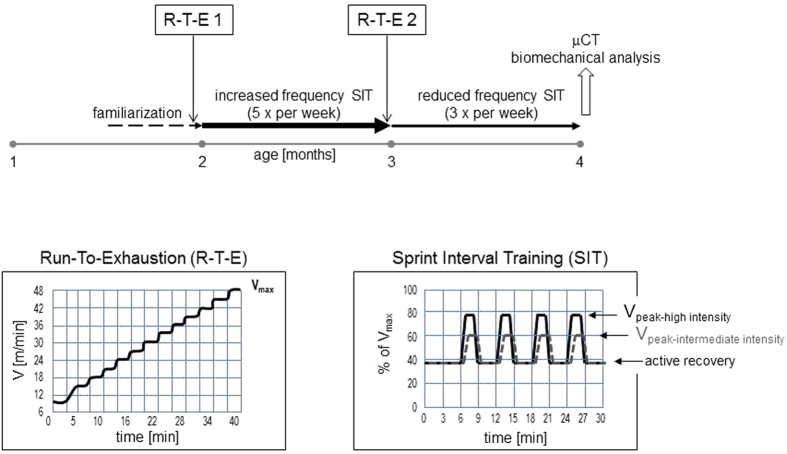Figure 1. Training Programs.
Treadmill training consisted of two weeks of familiarization followed by 4 weeks of increased frequency sprint interval training (five times per week) and another four weeks of reduced frequency sprint interval training (three times per week). The time line is depicted by horizontal arrows. At the end of the familiarization phase and again at the end of the four weeks of increased frequency sprint interval training, all mice took a run-to-exhaustion test in order to determine their individual performance limit. After completion of the eight weeks of sprint interval training at the age of four months, mice were sacrificed and bones of the left hind limbs were prepared for micro-computed tomography (μCT), the right femora were prepared for three-point-bending assays. Mice were weighed at entry into the familiarization phase and every week thereafter. Inserts illustrate the ramp-up run-to-exhaustion test yielding the maximal velocity (Vmax) each mouse was capable of running (left insert) and the sprint interval training with its peak velocities (Vpeak) for either high or intermediate intensity as well as active recovery phases (right insert).

